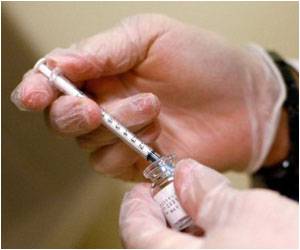Mavoglurant class of drugs improves eye gaze behavior and alters reactivity to faces in patients with fragile X syndrome.

‘Mavoglurant addresses eye gaze behavior of patients with FXS who make less eye contact and have reduced looking time to the eye region of human faces.
’
Read More..




Gaze avoidance, a hallmark feature of FXS, reflects social anxiety and interferes with social engagement and social-emotional development.Read More..
Individuals with FXS make less eye contact and reduced looking time to the eye region of human faces, and greater pupil reactivity to emotional faces, when compared to typically developing individuals.
"Mavoglurant appears to target a core problem in FXS patients," said Dr. Elizabeth Berry-Kravis, pediatric neurologist at Rush University Medical Center and senior author of the study.
"This type of drug has been one of the most studied drugs ever in pre-clinical models of developmental disability. It has produced improvement in over 40 scientific papers on the fragile X mouse, fly and rat models. Yet these findings could not be extrapolated to human trial breakthroughs," said Berry-Kravis.
"The findings in this study suggest the drug is targeting the brain and improving the disease and could act as a biomarker to indicate that the trials completed thus far may not be looking at the right outcomes." "Social anxiety is one of the most stressing manifestations of FXS. Gaze avoidance is a pretty good indicator of this social anxiety or avoidance and it could be measured with an eye tracker," said David Hessl, clinical professor in the Department of Psychiatry and Behavioral Sciences and a researcher at the MIND Institute.
Advertisement
Using an infrared binocular eye tracker, the researchers collected gaze pattern data of 57 patients with FXS at baseline and following three months of blinded treatment. Participants were between 12 and 45 years old, had an IQ below 70, and were randomly assigned to receive either one of three doses of mavoglurant (25mg, 50mg, or 100mg) or placebo.
Advertisement
This is the first study to show a positive effect of the drug in humans with fragile X. Earlier clinical trials with humans failed to show improvement in teenagers and adult patients with FXS despite compelling evidence of reversal of numerous features in both the fly and mouse models.
With a series of failures to show significant behavioral improvement over placebo in clinical trials, this study provides support that mavoglurant can be a promising drug that may impact a core behavioral feature of FXS, and can encourage researchers to look at different trial designs.
"The results from this study are important knowing that the larger trials showed no drug benefit over placebo; yet these objective indicators serve as biomarkers that appear to be sensitive to the treatment," added Hessl. "This by itself is encouraging on the biomarker development side, and hopefully will open others' eyes to the possibility that the mGluR theory and modulation might still be clinically and scientifically relevant for people with fragile X."
Berry-Kravis is currently leading a study funded by NIH through the NeuroNext network to evaluate the effects of Mavoglurant on language learning in 3-6-year-old children with fragile X in a new trial design.
"The eye tracking study supports the plan in our NeuroNext study to evaluate the drug effects on learning, also a core feature of FXS, in children who may have more potential for improving the learning ability relative to older patients," said Berry-Kravis.
Eye tracking is being studied under the direction of Hessl in this new trial.
FXS is an X chromosome-linked genetic condition that causes a range of developmental problems including learning disabilities and cognitive impairment. FXS occurs in approximately 1 in 4,000 males and 1 in 8,000 females and is associated with significant reduction or complete absence of Fragile X Mental Retardation Protein (FMRP).
The manifestations among those with FXS vary and consist of physical features, intellectual disability, autism or autistic like behaviors. It also includes high rates of anxiety and social withdrawal, inattention and distractibility, disinhibition and impulsivity, hyperactivity, aggression and self-injury.
Source-Eurekalert











